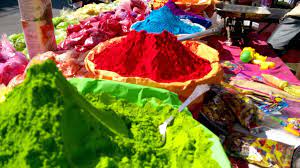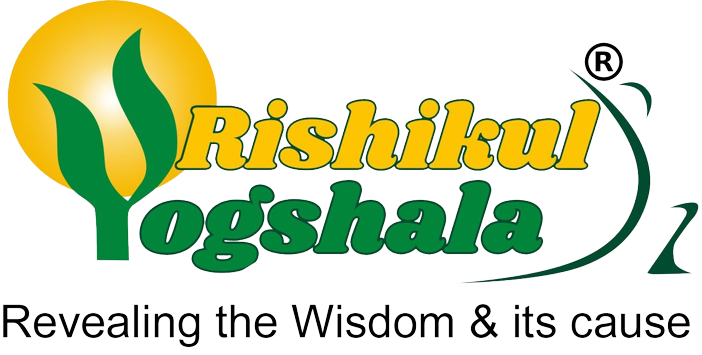I was very excited to learn that I would be in India, at a yoga teacher training course in Rishikesh during the ‘Festival of Colours’-Holi, said to be one of India’s most popular and vibrant festivals. A festival signifying the end of winter and start of spring, and praying for the abundance of the upcoming harvest. Thousands of Indians enthusiastically take to the streets to throw and smear coloured powder and water on each other, leaving happy rainbow coloured men, women and children of all ages, castes and statuses. Breaking down barriers and leaving an infectious, boisterous laughter. Shops, schools and offices are closed for the day so that all can join in the colourful celebrations. For us, all classes are suspended, old clothes adorned as much excitement radiates from all the teachers, staff and students. We are prepared to get wet and dirty, in a colourful way. In preparation we rub coconut oil over our skin and hair to prevent the colours staining, however I don’t have much hope for the clothes!
The festivals routes are based in Hinduism and it commemorates the victory of good over evil by burning the demon ‘Holika’, held on the last full moon of the month. In India all faiths come together to sing, dance and throw powder, paint and water indulging in this giant coloured water fight. Children fill up water balloons and take delight in throwing them at any passers by. Groups of older women called ‘tolis’ move around in swarms, spreading their greetings and colours. An abundance of mouthwatering treats are on offer from local street stalls to fill our stomachs as we join the festivities.

On the eve of Holi, ‘Holika Dehan’ bonfires are lit whilst people gather to roast local produce on gram and stalks from the harvest. The tradition of lighting the fire is believed to render gratefulness to Agni the God of fire. Once the fire has burnt, the ash from the bonfire is seen as sacred and is applied to the forehead as it is believed that this ash will protect them from evil forces.

We visit the local market to stock up on colours and water guns, small packets of powder are sold for a few rupees each in reds, yellows, greens, oranges and purples.
On the morning of Holi we are woken up early by children screaming and laughing in the street, filling up buckets of water and throwing over anyone who passes by followed by a sprinkling of colored paint powder. Everyone is yelling ‘Happy Holi’. At the school we all start ‘playing holi’ throwing water at each other and colored paints a riot of color is consumed. By 10am we are all colored and wet and everyone is laughing, singing and dancing.
Just before lunch we head to another gathering down the street, where music is playing loud, strangers stop by with yells of Happy Holi and add more paint to our already colored faces. This goes on across the town until 3pm when exhausted and full of love and laughter we head in for a much needed shower! Turning the bathroom a multitude of colors we scrub at our skin to remove all of the colors, however my hair is now a tone of red and purple that will take a lot of shampooing to remove!

The spirit of Holi removes all barriers to create unity in society, turning enemies to friends and friends to lovers. The colourful festivities engage people of all communities, religions and faiths to strengthen the great nation that is India. For this day there are no color barriers as we are all a rainbow of colors. It was one of the most inclusive and fun experiences I have had, a day to remember as the highlight of my time in Rishikesh.




